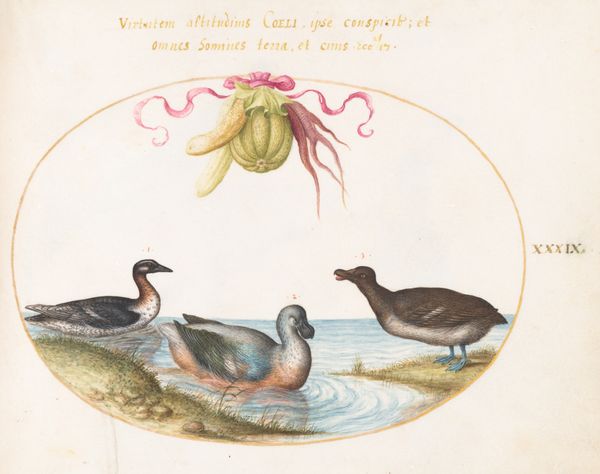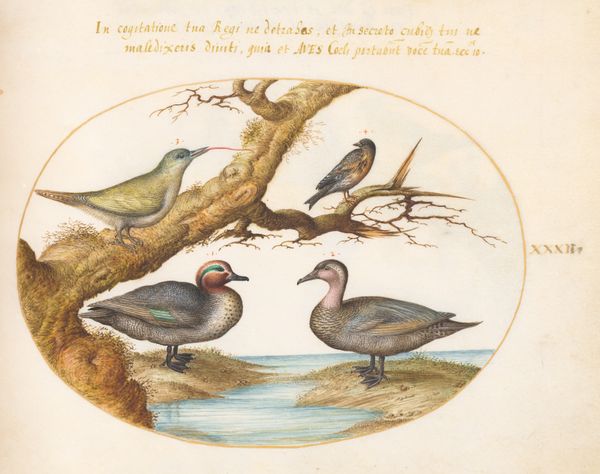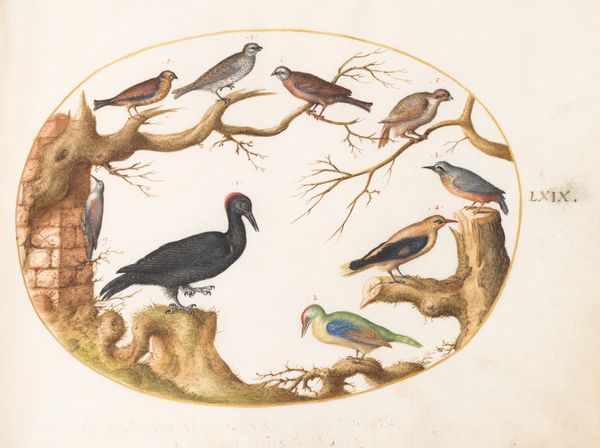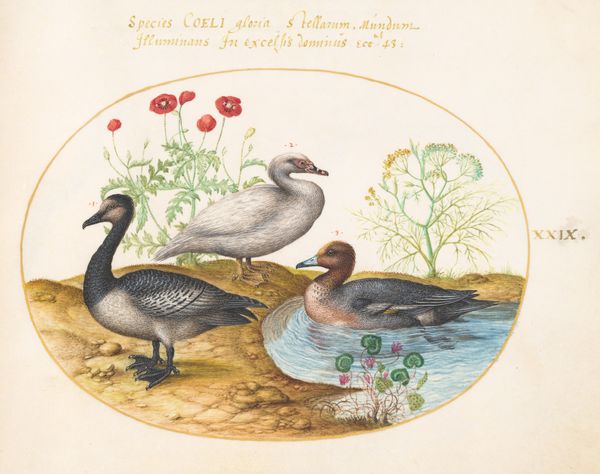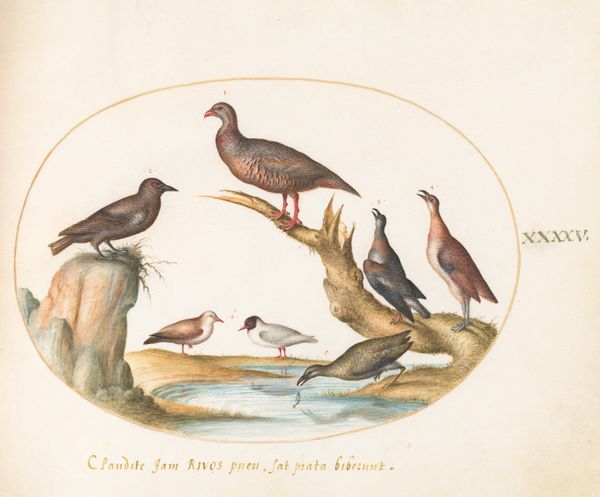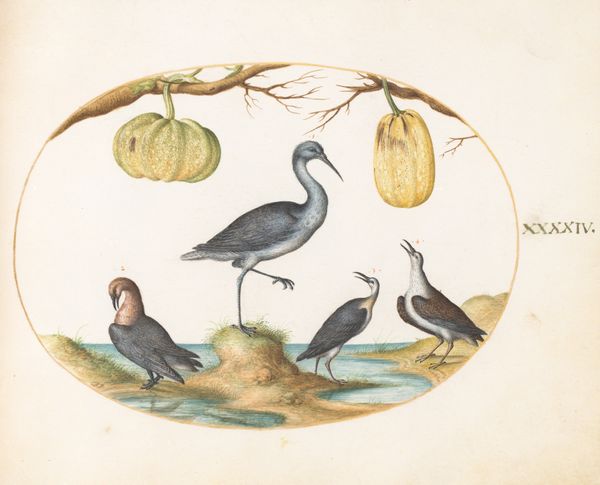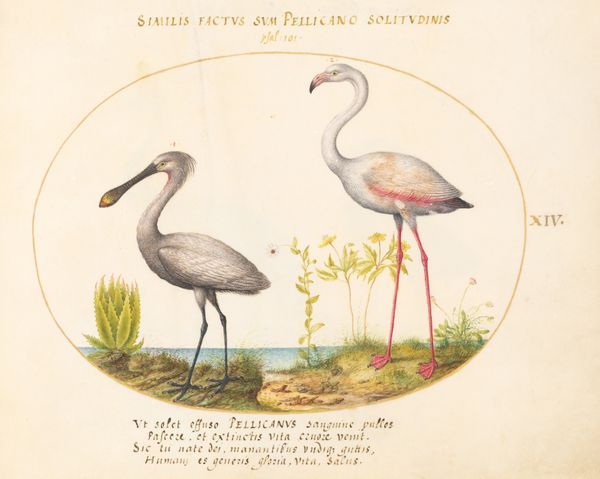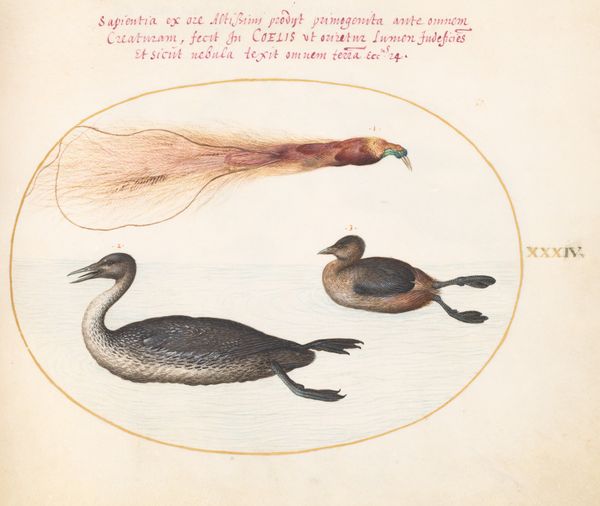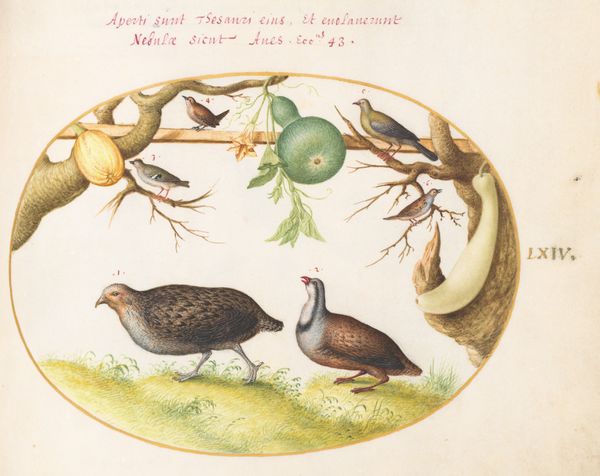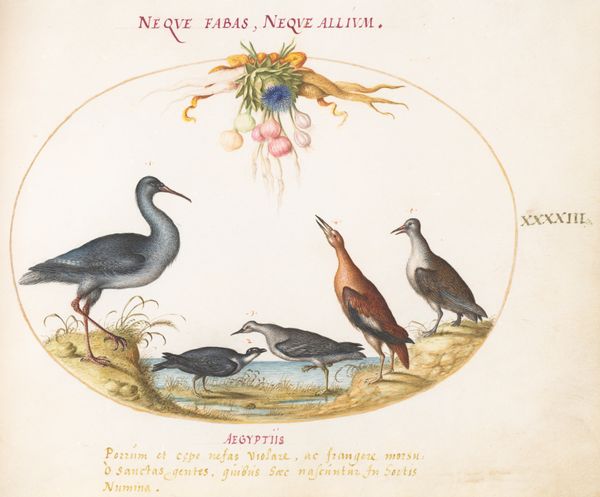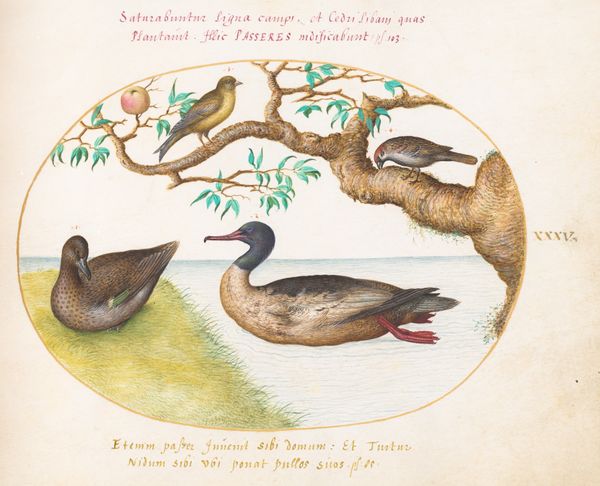
Plate 31: Duck, Merganser, and Three Goldfinches c. 1575 - 1580
0:00
0:00
drawing, coloured-pencil, watercolor
#
drawing
#
coloured-pencil
#
water colours
#
landscape
#
mannerism
#
watercolor
#
coloured pencil
#
botanical drawing
#
watercolour illustration
#
botanical art
#
watercolor
Dimensions: page size (approximate): 14.3 x 18.4 cm (5 5/8 x 7 1/4 in.)
Copyright: National Gallery of Art: CC0 1.0
Editor: Here we have Joris Hoefnagel's "Plate 31: Duck, Merganser, and Three Goldfinches," created around 1575-1580. It's a beautiful drawing done with watercolor and coloured pencil. It strikes me as a very precise and almost scientific observation of nature. What do you see in this piece? Curator: This is more than just a pretty picture; it reflects the tumultuous 16th century. Hoefnagel's meticulous detail highlights a growing scientific curiosity, but we must remember the socio-political backdrop. How do you think the religious wars and burgeoning colonialism might have impacted how people viewed and documented the natural world? Editor: I guess I hadn’t considered that. The scientific impulse makes sense, but the historical context adds another layer. It becomes more about asserting a certain power over the natural world, perhaps? Curator: Exactly. These detailed illustrations, while seemingly objective, are born from a specific cultural moment of European expansion. This botanical art is also intertwined with emerging global trade networks. It represents access, documentation, and ultimately, control. It also demonstrates a shift in the status of art within society. Before this period art served as an adjunct to crafts. Here we see art acquiring an elevated epistemological and professional role. Considering Hoefnagel's religious views and refugee status, what message about nature and freedom could this be projecting? Editor: That's fascinating. It really changes how I see it. It's not just a charming drawing; it's a product of its time, shaped by power dynamics and cultural shifts. Curator: Indeed. It’s a reminder that even seemingly innocent depictions of nature can be laden with historical significance and influence. Understanding those undercurrents enriches our understanding and appreciation of the art itself. Editor: I’ll never look at botanical drawings the same way again! Thanks!
Comments
No comments
Be the first to comment and join the conversation on the ultimate creative platform.
